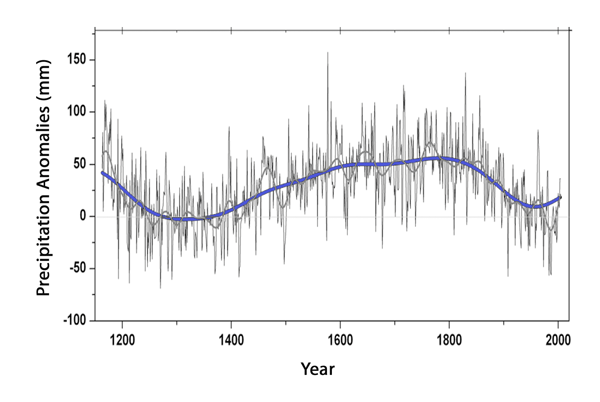Reference
Griessinger, J., Brauning, A., Helle, G., Thomas, A. and Schleser, G. 2011. Late Holocene Asian summer monsoon variability reflected by δ18O in tree-rings from Tibetan junipers. Geophysical Research Letters 38: 10.1029/2010GL045988.
Description
Based on correlations they exhibited with climate data, tree-ring δ18O measurements of high-elevation Tibetan juniper (Juniperus tibetica) trees were shown to be excellent indicators of August precipitation near the city of Reting (30°18.5'N, 91°31'E) in the southern part of the Tibetan Plateau; and, therefore, Griessinger et al. state that the 800-year annually-resolved oxygen isotope series they developed reflects long-term variations in Asian summer monsoon (ASM) activity in that part of the world. And this history, as they describe it, reveals an "ASM minimum during the Medieval Warm Period (around 1200-1400) and moister conditions during the Little Ice Age (1400-1900)," while they report that "the late 20th century was among the driest periods during the past 800 years, showing a tendency to slightly wetter conditions after AD 1990," as depicted in the figure below. This close but inverse correspondence between centennial-scale precipitation anomalies and similar well-known global temperature anomalies (the MWP, LIA and CWP) provides further evidence for the historical reality of the MWP on the Tibetan Plateau, while the graph of the precipitation anomalies shown below suggests that the MWP may actually have been somewhat warmer than the CWP has been to date.





